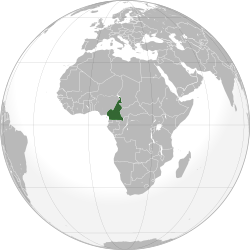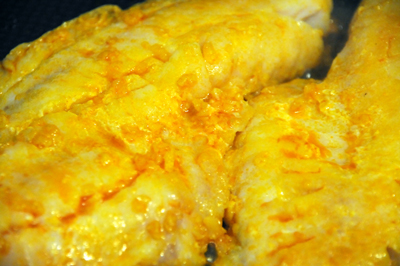Yes, I know. I should have guessed that dried shrimp would be equally as disgusting as shrimp paste, but you know, it sounds so much less offensive. Like “dried apricots” or “dried beef strips.” How bad could it be?
Well, I started my little adventure on Amazon.com, where I found a bottle of dried shrimp that was available on Prime, meaning it would arrive in plenty of time for this week’s meal. When it showed up, it was a bottle of fish food.
Now with the benefit of 20/20 hindsight, I now realize that this was nature and Amazon.com’s way of telling me that dried shrimp are not fit for human consumption. But you know me, in trying to be faithful to the recipe that I was determined to make I decided I would just dry my own shrimp. Please stop laughing.
So I went to Raley’s and picked up a package of salad shrimp, and then I spread them out on a pizza screen and stuck them in the oven at 170 degrees. Within about two hours every corner of my house from the girls’ bedroom to my walk-in closet stank of, guess, what? Shrimp paste.
Ladies and gentlemen, I submit to you that shrimp is not meant to be prepared in any other way but in a pot or frying pan. Any shrimp product that is supposed to be stored and used at room temperature should only ever be fed to your cat. Or aquarium fish.
Anyway, the country that inspired this smelly incident was Cameroon, which is almost ironic since the name “Cameroon” itself is derived from the Portuguese phrase “Rio dos Camarões,” which means “River of Shrimp” (the Portuguese evidently noted the abundance of prawns in the local waterways when they arrived there in 1472). Cameroon is only the 53rd largest country in the world (which makes it a little bit bigger than the state of California), but because of its diversity in geography and culture it is often called “Africa in Miniature.” It has beaches, savannas, rain forests, deserts and mountains, which pretty much covers most of Africa’s major geographic features. English and French are the two official languages of Cameroon but there are actually more than 200 different linguistic groups living there. It is also home to the world’s largest frog, the “goliath frog,” which can grow to more than a foot in length and can weigh up to 8 pounds. Don’t worry, we won’t be eating any goliath frogs this week (though in some parts of Cameroon they are considered a source of food).

Like many African nations, Cameroon cuisine relies heavily on cassava, plantains, potatoes, peanuts and rice. Most people get their protein from fish, and domestically-raised meat is generally only eaten on special occasions. “Bush meat” like porcupine, giant rat and pangolin (a scaly anteater) are also eaten there, as well as chimpanzee and gorilla (though both latter meats are not legal).

I wouldn’t exactly have been surprised to find porcupine at Exotic Meat Market, but I admit I wasn’t really looking. Fish, since it’s a common source of protein, seemed much more like the way to go.
Here’s the main dish I settled on, which came from the Congo Cookbook:
Fried Fish in Peanut Sauce
- 1 to 2 tbsp palm oil
- 1 whole fish*, washed, patted dry, and cut into serving size pieces (save the head)
- 2 to 3 cloves of garlic, minced
- 1 tsp coriander
- 1/2 tsp ground ginger
- 1/2 tsp nutmeg, grated
- salt (to taste)
- black pepper (to taste)
- 1 1/2 tsp smoked or dried shrimp or prawns (or fish), ground into a powder**
- 1 1/2 tsp smoked or dried shrimp or prawns, whole**
- 1 tbsp peanut oil
- 1 onion, finely sliced
- 1 to 3 chile peppers, cleaned
- 1 cup unsweetened peanut butter
** If you read the first part of this entry, you will know that I don’t recommend dried shrimp. Fortunately, the recipe does say you can also use smoked or dried fish, so I used dried bonito flakes (the primary ingredient in Japanese miso soup) instead of ground dried shrimp, and fresh salad shrimp instead of dried whole shrimp.
This recipe is supposed to be served with rice and boiled plantains, which makes it a meal all by itself. However, you probably know how I feel about boiled plantains (the same way I feel about fried plantains, blech). I thought I’d give them another chance, though, because I hoped maybe cooking them with seasonings might make them more interesting. Ha ha.
Anyway here’s the second recipe:
Sese Plantains
- 2 large green plantains
- 10 1/2 cups water
- 2 medium tomatoes, peeled and chopped
- hot pepper, to taste
- 1 large onion, peeled and chopped
- 1/2 cube vegetable stock (optional)
- 1 tablespoon palm oil
- salt, to taste
- roasted cashew nuts, to garnish
Finally, I chose this dish as a side, though I don’t think it was really needed to complete the meal:
Fresh Corn Muffins
- 4 ears fresh corn
- 2 1/2 tsp. baking powder
- 1/2 tsp. salt
Now for the cooking part. I started with the corn muffins, because they were easy and
seemed like they could bear making ahead.
First grate the corn off the cobs. (The original recipe said you could use frozen corn, but I doubt it would be anywhere near as delicious).
Add the baking powder and salt. Yes, it seems a bit weird that there is no flour, but trust me, flour isn’t needed.

Preheat your oven to 425 degrees. Grease muffin cups (I used butter) and fill up about halfway with the corn mixture.
Bake for 25 minutes or until a toothpick comes out clean.

(Note: for me this recipe only made four muffins. With larger ears of corn you could probably get about a half dozen).
On to the fish:
Heat the palm oil on a skillet and fry the fish with half the garlic, turning once. When the fish is cooked through, remove from heat and drain on paper towels.
 |
| Who needs turmeric? Palm oil gives the fish this bright yellow color. |
Mix the coriander with the ginger, nutmeg, salt, pepper and fish flakes (or ground dried shrimp if you are insane).
Now bring four cups of water to a boil. Add the fish head and the spice/dried fish mixture. Note: I used fish stock instead of water, because I didn’t have the head.
In another skillet, heat the peanut oil and fry the onion with the remaining garlic. When the onion is brown, reduce the heat and add the chili pepper.

Now add the fish.
Remove the fish head from the broth and add the peanut butter. Stir until smooth. Bring to a boil, then reduce heat and simmer until the sauce thickens.
Add the sauce to the fish and onions and garnish with the remaining dried shrimp, if using (I just used fresh salad shrimp). Cook until heated through.

Serve over boiled white rice with sese plantains.
Now for the plantains:

Cut the plantains up into 6 pieces each. Bring the water to a boil and add the plantains. Cook for 10 minutes, then add the tomatoes, pepper and onion.
Simmer for 10 more minutes, then add the stock cube. Cover the pot and give the cube about five minutes to dissolve, then add the palm oil.
Cook for an additional 10 minutes and season to taste with salt and pepper. Sprinkle with cashews and serve.

I did this meal just for myself and Martin, because as you know I don’t like to waste good money trying to make my kids eat expensive pieces of fish.
Martin was less impressed than I was, because as a general rule he’s not that crazy about fish. I thought the sauce was pretty amazing, personally. It would have tasted good on anything, not just fish. In fact I would probably be happy just eating it by itself over white rice.
The plantains were, what can I say, just as bland and boring as plantains always are, even with the addition of all those extra flavors. I guess I just don’t like plantains. Is that a broken record you hear? Yes it is. I’m sure I’ll do them again at some point, since they seem to be so prolific in world cuisine, but I don’t expect I’ll ever particularly like them.
The corn muffins were tasty, which was surprising for such a simple dish. Who needs flour? They were light and sweet and went really nicely with the fish and peanut sauce.
The verdict: I like Cameroonian food. It didn’t wow me the way Burma and Cambodia did, but at the very least I’d probably make the sauce again. Now of course there’s the big question: how did the liberties I took with this recipe affect its authenticity? That’s a good question. I think I’d prefer not to know the answer, at least not until I’m ready for a do-over.
Next week: Cape Verde
For printable versions of this week’s recipes:











I'm so Impressed with all your African cooking!
ReplyDeleteYour blog must be helping to open people in the food blogosphere up to the delights of African food
Another lovely lovely recipe :)
Thank you! African food can be really challenging, but it's really fun to make and it's wonderful when you get it right! :)
ReplyDeleteI'm sorry the dried shrimp didn't work out.. I find that authentic African dishes (especially West African) are difficult to make. I tried to make foufou and it was horrific! I've had better success with Kenyan food. I've had many Cameroonian dishes made by my friend's mother (right after she arrived to the USA for the first time from Cameroon) and they ALL featured the dried shrimp. It stunk so bad in the apartment but most of it was AMAZING!
ReplyDeleteActually I tried dried shrimp again when I made Cantonese food a few weeks after this entry. This time I didn't try to dry it myself, so it wasn't so traumatic. :) It was actually really good in the dish (it was a fried rice) so I'm not so horrified by the idea of it any more. But I do prefer to buy it already dried because whew, that is some stink it makes when you dry it yourself!
ReplyDelete